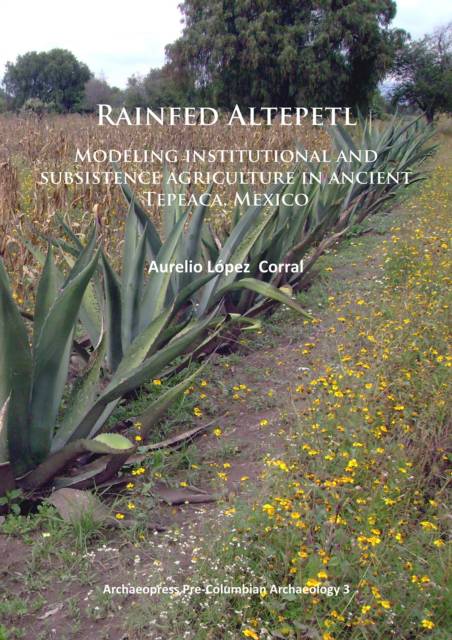
- Afhalen na 1 uur in een winkel met voorraad
- Gratis thuislevering in België vanaf € 30
- Ruim aanbod met 7 miljoen producten
- Afhalen na 1 uur in een winkel met voorraad
- Gratis thuislevering in België vanaf € 30
- Ruim aanbod met 7 miljoen producten
Zoeken
Rainfed Altepetl
Modeling Institutional and Subsistence Agriculture in Ancient Tepeaca, Mexico
Aurelio Lopez Corral
€ 35,45
+ 70 punten
Omschrijving
Climate variability and human management strategies on crop stands were major factors that frequently affected agricultural yields among indigenous populations from central Mexico. This work seeks to model food production in ancient Tepeaca, a Late Postclassic (AD 1325-1521) and Early Colonial (16th century) state level-polity settled on the central highlands of Puebla, by applying a model that recognizes the presence of two independent and interconnected forms of food production: subsistence agriculture and institutional agriculture. Crop stands within this region depended heavily on rainfed conditions, a form of agriculture that often generates unstable interannual fluctuations in yields. Archaeology acknowledges the effects of such variations on the economy of households and institutions, but attention has been largely put on estimating average productivity values over long periods rather than focusing on interannual divergences. Such instability of agricultural production was recorded among modern Tepeaca's agriculturalists through an ethnographic survey. This crucial information, along with archaeological data and local 16th century historical sources, is used for modeling the effects of climate variability among prehispanic populations and serves to better comprehend the organization of past agrarian structures, tribute systems and land tenure organization at the household and regional levels.
Specificaties
Betrokkenen
- Auteur(s):
- Uitgeverij:
Inhoud
- Aantal bladzijden:
- 157
- Taal:
- Engels
- Reeks:
Eigenschappen
- Productcode (EAN):
- 9781784910402
- Verschijningsdatum:
- 31/12/2014
- Uitvoering:
- Paperback
- Formaat:
- Trade paperback (VS)
- Afmetingen:
- 211 mm x 297 mm
- Gewicht:
- 452 g

Alleen bij Standaard Boekhandel
+ 70 punten op je klantenkaart van Standaard Boekhandel
Beoordelingen
We publiceren alleen reviews die voldoen aan de voorwaarden voor reviews. Bekijk onze voorwaarden voor reviews.








